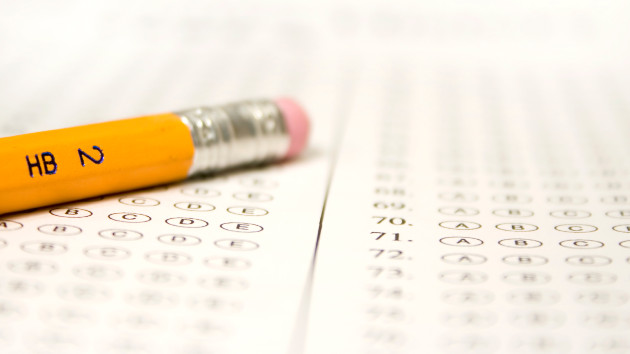(NEW YORK) — Math scores among fourth and eighth grade students across the country experienced their largest decline in decades, according to results from the National Assessment of Educational Progress (NAEP), known as the “Nation’s Report Card.”
Peggy Carr, commissioner of the National Center for Education Statistics (NCES), which conducted the study, said in a statement that the results reflect the “profound toll” the pandemic took on student learning.
“The results also underscore the importance of instruction and the role of schools in both students’ academic growth and their overall well-being,” Carr said. “It’s clear we all need to come together—policymakers and community leaders at every level—as partners in helping our educators, children, and families succeed.”
NCES compared students’ NAEP scores during the COVID-19 pandemic to pre-pandemic performance on the 2019 NAEP assessments. NCES has administered the assessments in math and reading since the early 1990s. About 450,000 students from more than 10,000 schools participated in the 2022 exams.
Compared to 2019, the average fourth grade math assessment scores decreased by 5 points and the average eighth grade assessment scores decreased by 8 points, according to the results.
On average, fourth and eighth grade students’ reading scores also declined but not as sharply as the math assessment scores. Compared to 2019, the average fourth and eighth grade reading scores decreased by three points each.
Fourth grade students of color, specifically, experienced more dramatic declines. For example, the average math score for Black and Hispanic fourth grade students dropped the most compared to other racial and ethnic groups. The average reading score for American Indian/Alaska native fourth grade students plummeted by the largest margin.
The northeast region saw the largest decline in average scores for both math and reading during the pandemic.
For many parents and educators, the recent NAEP results confirm fears of the pandemic’s long-term consequences for students’ academic progress.
Remote learning also laid bare existing racial and class disparities in education caused by lack of access to reliable technology and child care support for full-time working parents. Students of color were also more likely to continue remote learning for longer periods of time and were also more likely to have lost a parent or caregiver compared to their white peers during the pandemic.
Last month, NCES reported that math and reading test scores among the nation’s 9-year-olds also plummeted during the first two years of the pandemic, with reading scores falling by the largest margin in more than 30 years.
Copyright © 2022, ABC Audio. All rights reserved.












